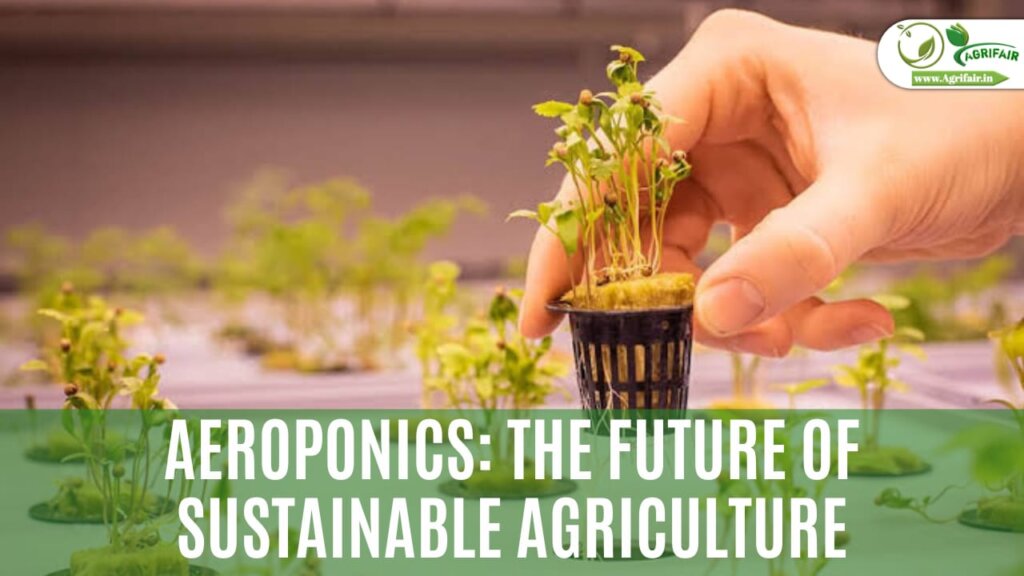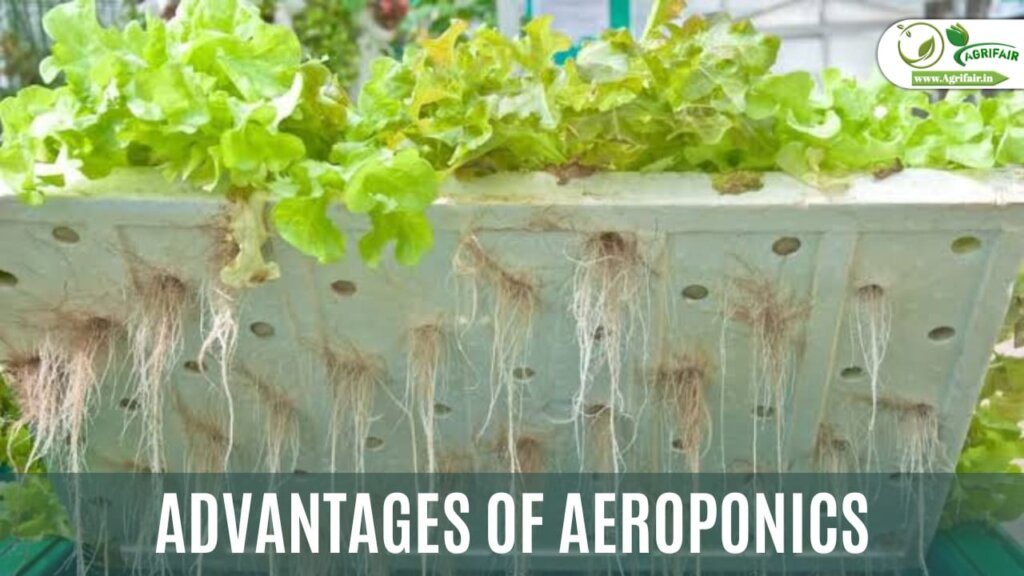Aeroponics: The Future of Sustainable Agriculture

Agrifair.in is a platform that is dedicated to promoting sustainable agriculture practices and technologies. One such technology that we would like to highlight today is aeroponics. Aeroponics is a method of growing plants in a closed or semi-closed environment without the use of soil. Instead, the plants are suspended in the air and their roots are misted with a nutrient-rich solution. This technology has the potential to revolutionize the way we grow our food and has numerous benefits for both the environment and for farmers
What is Aeroponics?
Aeroponics is a form of hydroponic farming that involves growing plants in a nutrient-rich mist instead of soil. This mist provides all the necessary nutrients, water, and oxygen that the plants need to grow. The roots of the plants are suspended in the air and are misted at regular intervals with the nutrient solution. This system can be completely closed, which means that there is no exchange of air between the inside and outside of the system, or it can be semi-closed, where air exchange occurs through a filter.
You may like this Hydroponics: The Future of Agriculture
Benefits of Aeroponics
Increased Efficiency
One of the biggest benefits of aeroponics is the increased efficiency it offers. In a traditional soil-based agriculture system, only about 20% of the water and nutrients used are actually absorbed by the plants. In an aeroponic system, the plants are able to absorb up to 98% of the water and nutrients, which means that farmers can use less water and fertilizer to produce the same amount of crops. This increased efficiency leads to lower costs for farmers and less waste.
Better Quality Crops
Another benefit of aeroponics is that it allows farmers to grow crops of higher quality. The controlled environment of an aeroponic system means that farmers can ensure that their crops receive the exact amount of water, nutrients, and light that they need to grow. This leads to stronger, healthier plants that are more resistant to disease and pests. In addition, aeroponic systems can be designed to grow crops year-round, which means that farmers can produce fresh, high-quality crops all year long.

Sustainability
Aeroponics is also a sustainable form of agriculture. The closed or semi-closed nature of aeroponic systems means that there is less water and nutrient runoff, which reduces the amount of pollution that is released into the environment. In addition, aeroponic systems use less land than traditional agriculture systems, which means that they have a smaller carbon footprint. This makes aeroponics an environmentally-friendly form of agriculture that is well suited to meet the needs of a growing global population.
Pest and Disease Control
Aeroponic systems are also better suited for pest and disease control. In a traditional soil-based agriculture system, pests and diseases can spread quickly, leading to crop loss. In an aeroponic system, pests and diseases are less likely to spread because the plants are not in contact with the soil. In addition, the controlled environment of an aeroponic system means that farmers can more easily detect and treat pests and diseases before they become a major problem.
Applications of Aeroponics
Aeroponics has numerous applications in agriculture. Some of the most common applications include:
- Urban Agriculture
Aeroponics is well suited to urban agriculture because it can be used to grow crops in small, vertical spaces. This means that urban dwellers can grow their own food in a small, efficient system that uses less land and water than traditional agriculture systems.
- Research
Aeroponic systems are also used for research purposes. Because the environment of an aeroponic system can be easily controlled and monitored, it is a great tool for plant research. Scientists can study the effects of different nutrient solutions, light conditions, and other environmental factors on plant growth and development. This research can lead to the development of new plant varieties that are better suited to different climates and growing conditions.
- Commercial Agriculture
Aeroponic systems are also used for commercial agriculture. In some cases, aeroponic systems are used to grow high-value crops such as strawberries, herbs, and microgreens. The controlled environment of an aeroponic system allows farmers to produce these crops year-round, which increases their income and provides a stable source of food for consumers.
For other types of Cultivation read this Cultivation and its Types
Types of aeroponic systems
Continuous Aeroponic System

A continuous aeroponic system provides a constant mist of nutrient-rich water to the roots of plants. This type of system is best suited for growing crops that have a high water requirement, such as lettuce and herbs.
Intermittent Aeroponic System
An intermittent aeroponic system provides a periodic mist of nutrient-rich water to the roots of plants. This type of system is best suited for growing crops that have a lower water requirement, such as tomatoes and peppers.
Low Pressure Aeroponic System
A low pressure aeroponic system uses a pump to provide a gentle mist of nutrient-rich water to the roots of plants. This type of system is best suited for growing delicate crops that are sensitive to water pressure, such as strawberries.
You may like this Organic Farming: Embracing a Holistic Approach to Agriculture for a Better Future
High Pressure Aeroponic System
A high pressure aeroponic system uses a high-pressure pump to provide a fine mist of nutrient-rich water to the roots of plants. This type of system is best suited for growing crops that have a high nutrient requirement, such as cannabis.
Deep Aeroponic System
A deep aeroponic system uses a nutrient-rich mist to grow plants in a deep growing chamber. This type of system is best suited for growing large crops, such as trees and shrubs.
Fogponics System
A fogponic system uses a fine mist of nutrient-rich water to grow plants. This type of system is best suited for growing small crops, such as microgreens and sprouts.
Each type of aeroponic system has its own unique benefits and challenges, and the best system for a particular grower will depend on their specific needs and the crops they are growing.
Conclusion
Aeroponics is a cutting-edge technology that has the potential to revolutionize the way we grow our food. Its numerous benefits, including increased efficiency, better quality crops, sustainability, and pest and disease control, make it a promising form of agriculture that is well suited to meet the needs of a growing global population. At Agrifair.in, we believe that aeroponics has a bright future and we are committed to promoting sustainable agriculture practices and technologies like aeroponics that can help us grow our food in a more sustainable, efficient, and environmentally-friendly way.


